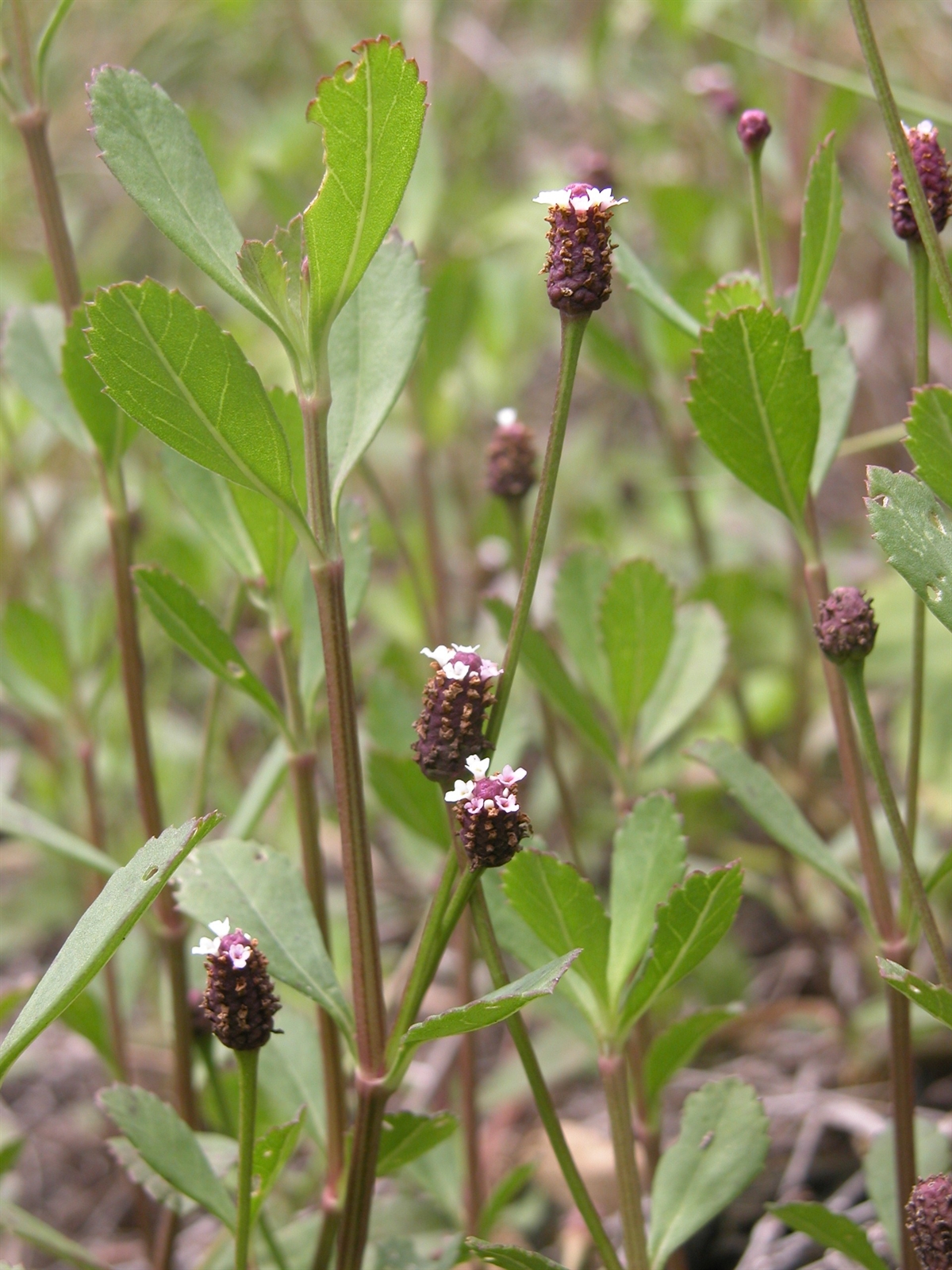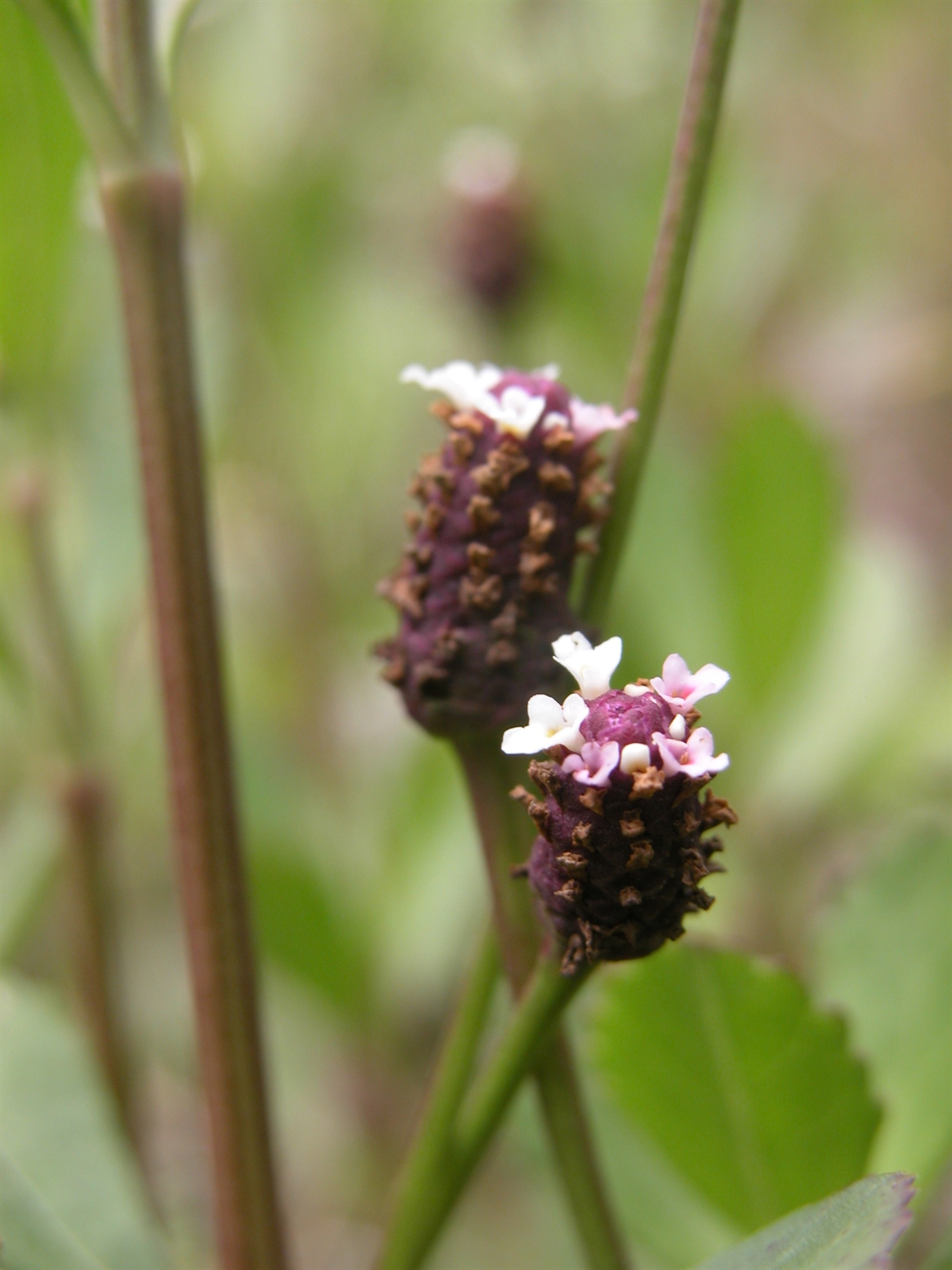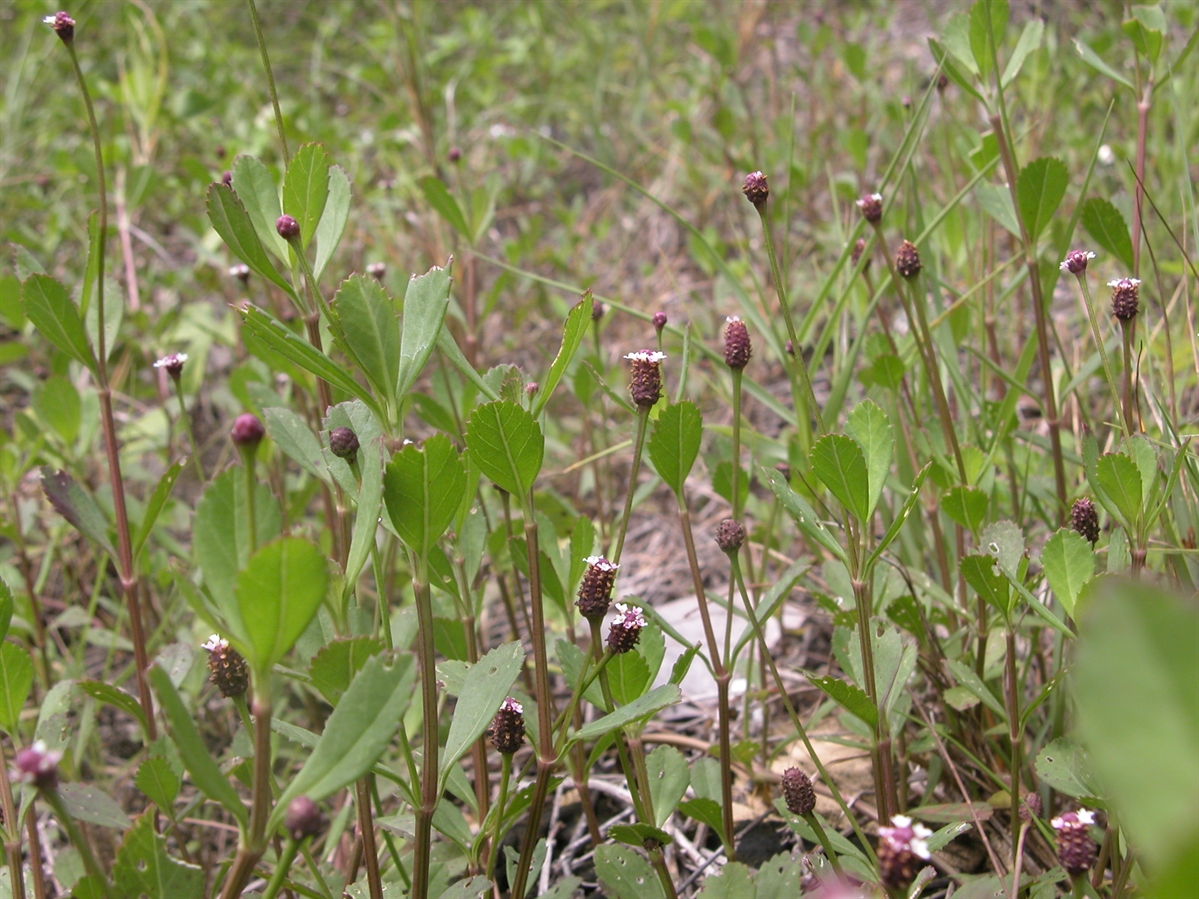Habit: Phyla nodiflora a creeping herb up to 10 m in length that roots at its nodes. The main stem sends up erect branches that terminate in inflorescences. The leaves are arranged oppositely with leaves up to 8 cm in length with serrate leaf margins.
The complete, perfect flowers are arranged in dense compact heads that elongate to form a spike that arises from leaf axils on long peduncles (up to 15 cm in height). Each flower has an involucral bract. The calyx has four fused sepals forming a short tube. There are four fused petals forming a tube with five lobes. The corolla is purple or white with a yellow center. The ovary is superior and has two locules. The fruit is a capsule.
Habitat: Phyla nodiflora grows in wet locations along the edges of ponds and Ephemeral Fresh Water Wetlands, Sabal palmetto savannahs and Human Altered environments (lawns, waste areas).
Distribution: Phyla nodiflora occurs on all island groups with the Lucayan Archipelago as well as the eastern United States. It has spread throughout the subtropical or tropical regions of the entire planet.
Medicinal/Cultural/Economic usage: Phyla nodiflora has no known medicinal plant usage in the Lucayan Archipelago. In India P. nodiflora is used to drain abscesses, treat colds and calcium accretions in organs (i.e. kidney stones) It can be used as a ground cover but does not take heavy or medium foot traffic.


